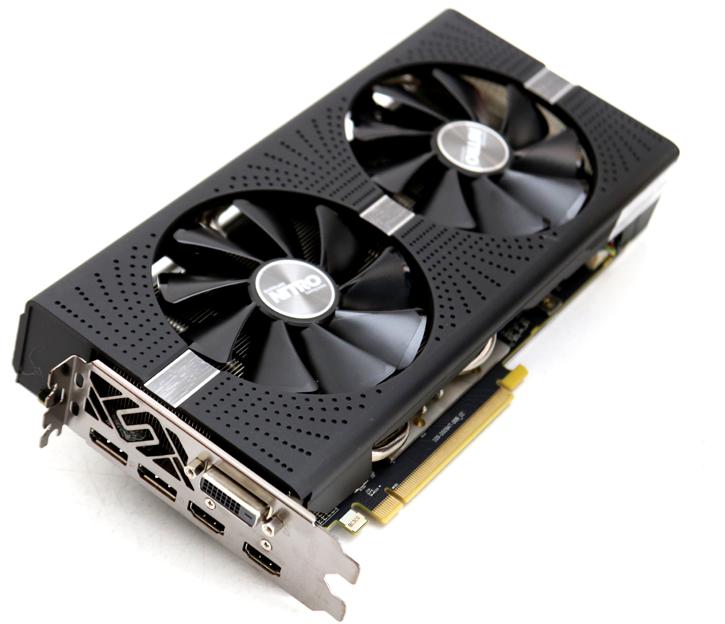The Mainstream Build
Likely the reason you're here now is that you want to try out a richer, more potential-filled side of PC gaming. Whilst 'The Bit' is a great entry-level system, the mainstream will use the extra budget almost solely for a more powerful graphics card, with the intent of providing near flawless 1080p, 60 FPS, very high/ultra IQ gameplay. We are targeting a 750-800 EUR budget, here. Potentially more 850 if you want to go a bit nicer on the case, which is something I'd always say is a 'nice to have'.
We're also going to be offering two builds here, because the mid-level is where some may wish to go for Intel systems, and others for AMD. I will not, by any means, get into the ins and outs of what is better. Suffice to say both platforms will offer you excellent performance when used properly and when gaming at realistic settings for whatever GPU you have.
CPU - AMD R5 2600 or Intel Core i5 8400
Intel's Coffee Lake and AMD's Pinnacle Ridge Ryzen+ CPUs are nowhere all here, but what stopped me from recommending Coffee Lake in the Spring version of this guide is now no longer a factor. Budget aimed H310 and B360 mainboards are now available, which means you can buy your i3 8100 or i5 8400 and pair it with a suitable motherboard.
With that said, for the AMD build, we have the new R5 2600, which is a major step up over the older R5 1400. 6 cores, 12 threads, and increased IPC/clock speeds over the aforementioned 2017 chip. We felt that the 1400 offered exceptional value for money, but the allure of more cores and more speed for still barely above 160 EUR is just too good to ignore. It's an excellent CPU.
If, however, you want to go Intel, the option is now certainly there. We have chosen their excellent entry level i5 8400. 6 cores, 6 threads, up to 4Ghz (single core). It provides compelling performance and can support even high-end GPUs. It's also an excellent CPU and you would not be going wrong by opting for either the 2600 or 8400 for your 'entry-level' build.
CPU Cooler - optional for AMD Build
Much the same advice applies here as it did in the previous segment. All you need to tame AMD Ryzen 3 and Ryzen 5 CPUs is a 30ish Euro air cooler, 120mm. Ryzen is a highly efficient CPU architecture and runs very cool. It also helps that the R5 2600 is a mere 65W in terms of TDP. You could certainly use the stock cooler to overclock the 2600, but I would be cautious about doing so. The Wraith Stealth cooler included with the 2600 is fairly diminutive, and will quickly be overwhelmed with a faster than stock 6 core CPU. The stock cooler that Intel provides with the 8400 is more than adequate to keep the locked SKU cool, so the only reason you'd go for an aftermarket cooler is aesthetics.
GPU - Nvidia GTX 1060 6GB or Radeon RX 580 8GB
We have reviewed numerous 1060's at Guru3D, and you can look at the extensive list here. A word of caution, please do not be tempted to overspend on a 'flashy' variant of the 1060. We are still aiming for value here, and higher end GPUs are very rarely worth it unless you are going for a particular aesthetic. Now that GPU pricing has largely returned to normal, the full fat 6GB 1060 is (somewhat) affordable again, and you should certainly go for it over the 3GB variant. Not only does it feature a 3GB of video memory, but it also is generally faster due to more shader cores.
The alternative to Nvidia's cards are AMD's Polaris based RX 570 (or RX 580). Should you wish to check out AMD' GPU offerings, the review of Sapphire's RX 570 4GB is here. Our review of the 580 is linked here, this time from the folks over at MSI. Both cards have options of either 4GB or 8GB onboard video memory. This will affect their resale value, but - in terms of viability 'now' - I would advise an 8GB RX 580, and a 4GB RX 570. Luckily, since the dying down of the crypto craze, availability of AMD's Polaris cards is much increased and at a significantly better cost than before. If you find a good deal, and it's what you want, go ahead.
Motherboard - B350 (AMD) chipset between 70-90 USD, or H310/B360 (Intel).
In the AMD space, we will stick to the B350 chipset for this build, though a slightly higher-end version (hence the extended budget for one). When paying more for a motherboard, expect more features, rear port connectivity, and a stronger VRM. Without wishing to get technical, a VRM (standing for 'Voltage Regulator Modules') is a catchall term used to refer to the power delivery array to the CPU, i.e. the range of components responsible for turning the 12V from your PSU into usable power for your CPU. Given the extra cores/threads on the 2600, it makes sense to pair it with a nicer motherboard, even if the VRM is largely the same (VRM designs on cheaper boards tend to be largely copy/pasted across the spectrum). I have deliberately not listed any specific model, as your choice will largely be dictated by the availability, cost, and amount you can spend on your particular iteration of the build. That said, stick to the price I've listed and look at products from the 'big four' manufacturers, i.e. MSI, Asus, AsRock, and Gigabyte.
Since the Intel system is running a locked i5 8400, I do not joke when I say 'any' board using the H310 or B360 chipset will do. Naturally, I would never advocate going for the cheapest offering possible, but a motherboard for a locked CPU is perhaps one time when it's not a terrible idea. 4 RAM slots is always nice, and always take care to look at rear IO connectivity and the number of SATA ports the board offers.
System Memory - 8GB DDR4 @ 3000-3200Mhz
Simple fact. AMD Ryzen loves fast memory. In fact, faster memory - in crude terms - makes the CPU go faster, due to the way AMD's Ryzen chips are made. To that end, faster memory is always better, and this is the reason I have recommended memory with speeds of at least 3000Mhz. Finding said memory, luckily, is relatively simple (if, sadly, not cheap).
'But Mr. Writer!' (I hear you cry again), 'you have not recommended anything specific! How am I to know what to buy?' That is a very good question, but one that - again, luckily - has a very simple answer. Any 8GB kit of DDR4 memory (2x 4GB sticks, please) from any reputable manufacturer will serve you well. Corsair, Kingston, AData, GSkill, Crucial, Team Group, etc. Do not worry about the brand here. That worrying will be saved for the higher end builds!
For the Intel system, really the same advice. Whilst Intel's Coffee Lake architecture isn't as affected by RAM speeds as Ryzen is, it still matters somewhat. Then again, if the choice comes down to a faster RAM kit or a 6GB 1060 vs the 3GB model... well, you know what to do.
Storage - 1TB 7200rpm HDD + 240-250GB SSD
Ok, I lied. I'll admit it. Only 'some' of that extra money would be used for the GPU. The rest is ensuring you are truly in 2018 by having a PC that contains both an SSD (for boot) and HDD (for 'bulk' storage). Much of what I said in 'The Bit' build applies here. Your choices for HDD's lie mostly with Seagate or Western Digital (though Toshiba also makes good drives). Stick to known brands, and use the link in 'The Bit' to go directly to our extensive SSD review list.
You will likely see SSD's that are labeled as 'M.2' drives. This can be confusing, as most of us are likely used to more traditional 2.5'' drives. Many a modern mid range motherboard can actually fit 1-2 M.2 drives. These drives are compelling as (if they use the NVMe interface) they are faster, but generally leave less cable clutter, and look 'cleaner.' However, they are more expensive, sometimes notably so. For now, stick to traditional 2.5'' drives. Should you wish to do your own research into the advantages of M.2 and what to buy, then first make sure your chosen board has M.2 slots! If it does, carry on. You also then need to ensure that the M.2 drive you're purchasing is actually running the 'NVMe' standard, as not all M.2 drives are equal. If you are confused, don't worry. M.2 drives that are still on the 'SATA' interface have three prongs for connecting to the mainboard, namely two skinny prongs flanking a fat one. M.2 drives that use the NVMe interface have just two prongs, a fat one, and a skinny one.
Power Supply (PSU) - 500-550W, 80+ Bronze
Eagle-eyed readers will notice that the above title is (almost) copied from 'The Bit.' Why? Well, modern GPUs are so power efficient that even a high-end card such as a 1080Ti (yes, not a type, even the 1080Ti) would run quite happily on a good quality 500W PSU (though it might be cutting things a litte close), even if paired with something like an overclocked AMD R7 or high-end Coffee Lake CPU! Whilst - in my opinion - there is little point going for a PSU below 450W, the headroom afforded to you by a 500-550W unit gives you the potential to upgrade without having to worry about power draw. That said, my recommendations from before still stand. Linked here is our PSU review list, for those wanting to get an idea of what else is our there. For this PC, however, I would stick to the above recommendations, only breaking away from them if you absolutely know you will need more than 550W at some point (for whatever reason).
Odds and Ends
Much the same of what I said regarding 'The Bit' applies here. Do not cheap out on a case. Get a sound card if you need one (again, you need a sound card if you are the type of person to know you need one!). Linked here is our list of speaker/soundcard reviews, if you are curious as to what is on offer, or simply what they do!
Finally, a word on case choice. As the components we are using are starting to draw a little more power (and, naturally, power = heat, by the laws of physics), a case that isn't entirely closed off or starved of airflow is a good idea. To that end, you do not, here, need to worry that much. Most modern ATX mid-tower cases have decent ventilation. If you are curious, you can check out our list of chassis reviews here, where airflow is always mentioned.
...but, you want something even more potent? Well, I guess we need to step it up a gear.


